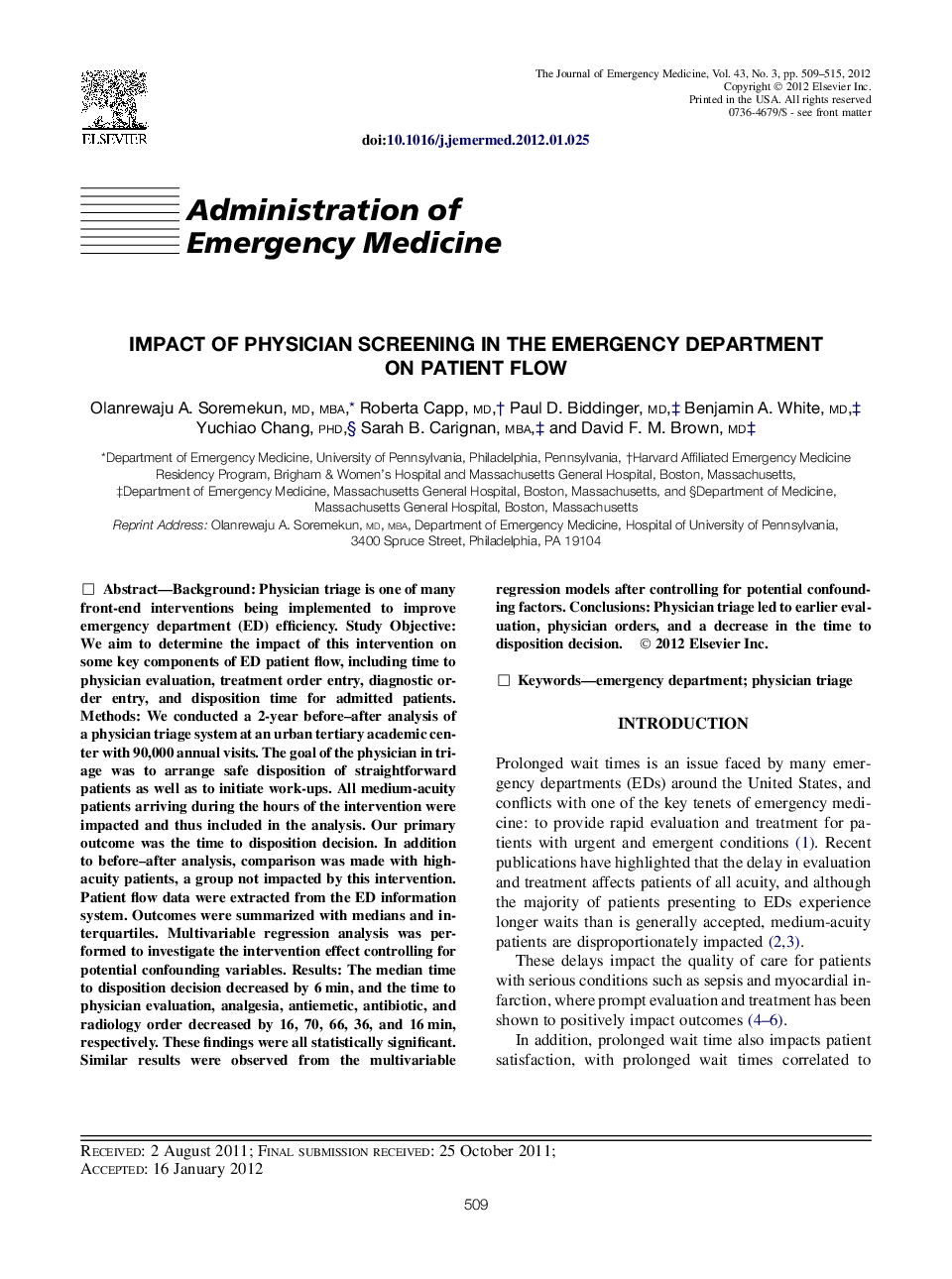| Article ID | Journal | Published Year | Pages | File Type |
|---|---|---|---|---|
| 3249284 | The Journal of Emergency Medicine | 2012 | 7 Pages |
BackgroundPhysician triage is one of many front-end interventions being implemented to improve emergency department (ED) efficiency.Study ObjectiveWe aim to determine the impact of this intervention on some key components of ED patient flow, including time to physician evaluation, treatment order entry, diagnostic order entry, and disposition time for admitted patients.MethodsWe conducted a 2-year before–after analysis of a physician triage system at an urban tertiary academic center with 90,000 annual visits. The goal of the physician in triage was to arrange safe disposition of straightforward patients as well as to initiate work-ups. All medium-acuity patients arriving during the hours of the intervention were impacted and thus included in the analysis. Our primary outcome was the time to disposition decision. In addition to before–after analysis, comparison was made with high-acuity patients, a group not impacted by this intervention. Patient flow data were extracted from the ED information system. Outcomes were summarized with medians and interquartiles. Multivariable regression analysis was performed to investigate the intervention effect controlling for potential confounding variables.ResultsThe median time to disposition decision decreased by 6 min, and the time to physician evaluation, analgesia, antiemetic, antibiotic, and radiology order decreased by 16, 70, 66, 36, and 16 min, respectively. These findings were all statistically significant. Similar results were observed from the multivariable regression models after controlling for potential confounding factors.ConclusionsPhysician triage led to earlier evaluation, physician orders, and a decrease in the time to disposition decision.
